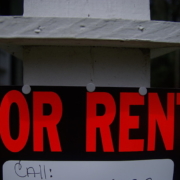COVID-19 and the Digital Divide in Virtual Learning, Fall 2020
With many schools closed and students working remotely amid the COVID-19 pandemic, this new report by CNK indicates improved access to computers and the internet during the Fall school term, but confirms a continuing and persistent digital divide, especially for Black, Hispanic and low -income students.
Using data from the U.S. Census Household Pulse Survey, the research shows the rate of limited digital access for households fell from a high of 42 percent amid the panic and chaos of the closure of schools last Spring to about 31 percent this fall. However, the data also shows that since mid-October the rate of inaccessibility has increased slowly but unmistakably. The researchers are concerned that the divide may worsen amid a surge in COVID-19 infections and resulting restrictions.
“The disparities in limited technological resources for virtual learning is not just today’s education crisis. Falling behind increases the achievement gap, which has long-term social and economic implications,” concludes CNK Director Paul Ong. “Digital inequality threatens to widen the racial and income gap as children become adults, contributing to an intergenerational reproduction of inequality. To avoid this tragedy, we must act immediately and decisively to close the digital divide.”
“This new research details a persistent and troubling digital divide among students, with far reaching implications for educational access and equitable opportunities,” said Tina Christie, Wasserman Dean of the UCLA School of Education and Information Studies. “The pandemic has brought into focus the intimate connection between education and technological connectivity and with it, the connection between connectivity and social justice. The battleground for educational equity has now and perhaps forever, shifted into a new space.”
Access the full report here >>> COVID-19 and the Digital Divide in Virtual Learning, Fall 2020
Access the supplementary factsheet with additional state statistics here >>> Additional State-Level Statistics
For another resource by AllConnect Info >>> What is the Digital Divide






 https://www.flickr.com/photos/29456235@N04/
https://www.flickr.com/photos/29456235@N04/ 




Trackbacks & Pingbacks
[…] social and economic implications,” Center for Neighborhood Knowledge Director Paul Ong said in a statement. “Digital inequality threatens to widen the racial and income gap as children become adults, […]
Leave a Reply
Want to join the discussion?Feel free to contribute!